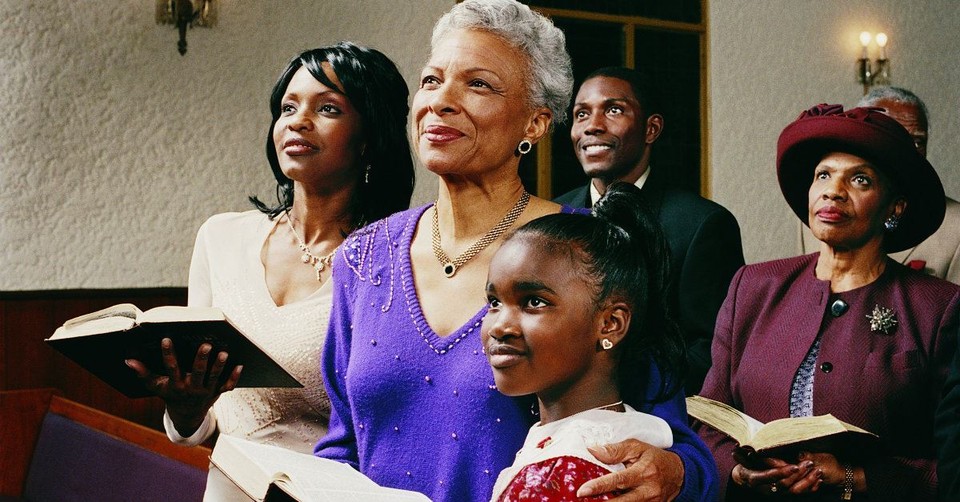Think of how much of the Bible contains stories. Here is a list of the books of the Bible that are almost exclusively narrative:
- Genesis
- Exodus
- Numbers
- Joshua
- Judges
- 1&2 Samuel
- 1&2 Kings
- 1&2 Chronicles
- Ezra
- Nehemiah
- Jonah
- Hosea
- Matthew
- Mark
- Luke
- John
- Acts
In addition, other books contain lengthy narrative passages, such as Isaiah 36-39 or the beginning and end of Job. Statisticians tell us from 1/3 to 1/2 of the Bible is narrative depending on how you classify it. So a preacher has to learn how to preach from narrative passages eventually.
However, as Sinclair Ferguson points out, Reformed ministers often struggle in this regard. In loving propositional truth, we are largely uncomfortable preaching from narratives: "Since we move by and large towards the Reformed spectrum of the Christian church our tendency inherently is to be most comfortable when we are preaching Paul–and as a consequence, to be least comfortable when we are preaching from things that are very different from the Pauline style–with the result that we tend to preach the whole of the Bible as if Paul had written it. We take historical narrative or poetic narrative and there is really no difference in the style of our exposition whether we are preaching from one part of Scripture or from another."
As Dr. Ferguson says, we take narratives and want to preach them like they are Paul's didactic letters rather than the stories they are. So here are just a few tips to help in preaching from narratives.

1. Find the dramatic tension.
Every sermon, as Bryan Chappell instructs, should have a "Fallen Condition Focus" where the congregation has the effects of living in this sinful world addressed with the gospel. In a narrative passage, the dramatic tension between the antagonist and protagonist seen in the plot should give this focus to the sermon. So whether it is Abraham wondering if he will ever have a son, Haman plotting against Esther, or the Pharisees condemning Jesus, identifying the tension point of the story is crucial to building a good sermon on a narrative text. The tension is not only showing the heart of the story, but how to get to the heart of your listeners.
Photo Credit: ©Pixabay

2. Think like the narrator.
The narrator's purpose in telling the story should become apparent through several means. The narrative portion you have for a text may be a scene of a larger story. For instance, if preaching on the text where Joseph's brothers sell him to slavery in Egypt, the jealousy of their father Isaac's favoritism or the dreams Joseph had the narrator included earlier inthe story should be noted. Also, details included in the story, such as Luke noting that Jesus "knew their thoughts" in speaking of the Pharisees before healing the man with the withered hand (Luke 6:8), should be pointed out. Noticing when inclusio is being used, where one story is clearly bracketed by another, should catch the preacher's attention. In the story of the woman preparing Jesus for burial in Matthew 26:1-16, one should note that the bookends of the story are showing the contrast between envy of the priests with Judas and the loving faith of this woman. Observing how the narrator is telling the story gives keen insight to his emphasis.
Photo Credit: ©Unsplash/Ben White

3. Note when he tells you the point of the story.
The narrator will often state the purpose or lesson of the story. For example, in John 2:13-22 when Jesus cleansed the temple, John points out that the disciples remembered at that time a verse from Psalm 69, "Zeal for your house will consume me." The narrator is clearly pointing out the main lesson of the story by including this in the text.
Photo Credit: ©Unsplash/Aaron Burden

4. Preach thematically, not necessarily chronologically.
When preaching a narrative, one could think that following the order of the story in preaching the sermon is necessary. However, often themes with lessons come out of the passage that do not support preaching the text in verse-by-verse order. As the Westminster Directory for Public Worship instructs the preacher: "In analysing and dividing his text, he is to regard more the order of matter than of words; and neither to burden the memory of the hearers in the beginning with too many members of division, nor to trouble their minds with obscure terms of art.” Like threads in a tapestry, following themes can give a clearer picture of the story's purpose.
Photo Credit: ©Unsplash/April Morales

5. Emphasize human nature to relate to and touch the congregation.
The human characters in a Biblical story make the truth more accessible to God's people. Joseph's reconcilation with his brothers, Moses' anger at the rock, or Peter's fear in sinking in the waves all are touchpoints to the congregation. The preacher should work to help his congregation experience what the Biblical character was going through at that time. The more the hearers feel it, the deeper the lesson will get down into their hearts.
Photo Credit: ©Unsplash/Phil Coffman

6. Put story retelling in your sermon primarily in the past tense.
One basic rule of thumb in story-telling is that the more serious the story, the more the past tense is used. When someone gives a historic account, they usually use the past tense for this reason. The present tense in storytelling is used when you are seeking to intensify the action at a crucial moment. For those declaring the gospel, they should retell a Biblical story mostly in the past tense, then shift to the present when they want to make the congregation feel as if they were there.
In conclusion, notice how George Whitefield does this in a famous sermon in Genesis 22 at one point as he describes Abraham coming to the point of sacrificing Isaac (present tense is in bold):
"And Abraham said, My son, God will provide himself a Lamb for a burnt-offering." Some think, that Abraham by faith saw the Lord Jesus afar off, and here spoke prophetically of that Lamb of God already slain in decree, and hereafter to be actually offered up for sinners. This was a lamb of God's providing indeed (we dared not have thought of it) to satisfy his own justice, and to render him just in justifying the ungodly. What is all our fire and wood, the best preparations and performances we can make or present, unless God had provided himself this Lamb for a burnt-offering? He could not away with them. The words will well hear this interpretation. But, whatever Abraham might intend, I cannot but think he here made an application, and acquainted his son, of God's dealing with his soul; and at length, with tears in his eyes, and the utmost affection in his heart, cried out, "Thou art to be the lamb, my Son;" God has commanded me to provide thee for a burnt-offering, and to offer thee upon the mountain which we are now ascending. And, as it appears from a subsequent verse, Isaac, convinced that it was the divine will, made no resistance at all; For it is said, "They went both of them together;" and again, when we are told, that Abraham bound Isaac, we do not hear of his complaining, or endeavoring to escape, which he might have done, being (as some think) near thirty years of age, and, it is plain, capable of carrying wood enough for a burnt-offering. But he was partaker of the like precious faith with his aged father, and therefore is as willing to be offered, as Abraham is to offer him: And "so they went both of them together."
And now, the fatal blow is going to be given. "And Abraham stretched forth his hand, and took the knife to slay his son." But do you not think he intended to turn away his head, when he gave the blow? Nay, why may we not suppose he sometimes drew his hand in, after it was stretched out, willing to take another last farewell of his beloved Isaac, and desirous to defer it a little, though resolved at last to strike home? Be that is it will, his arm is now stretched out, the knife is in his hand, and he is about to put it to his dear son's throat.
Whitefield, as it were, puts the knife handle right in your hand!
This article was originally published on Gentle Reformation. Reprinted with permission.
Barry York, is the author of Hitting The Marks. He describes himself as Sinner by Nature - Saved by Grace, Husband of Miriam - Grateful for Privilege, Father of Six - Blessed by God, and President of RPTS - Serve with Thankfulness.
Photo Credit: ©Thinkstock
Originally published November 06, 2018.







